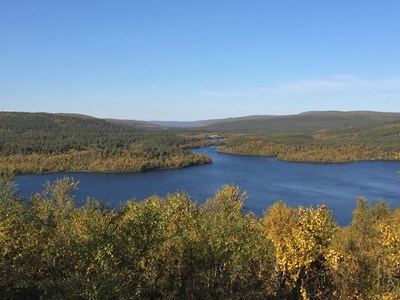The core issues that Dr. Jeff Welker's projects are addressing consist of two broad Arctic themes. His research programs are designed to fit within several UArctic Thematic Networks, including; Arctic-Boreal Hub, Health and Well Being in the Arctic, Northern Food Security, Sustainable Production and Foraging of Natural Products in the North.
How do historical reindeer use patterns affect the response of sub-Arctic reindeer ranges when considering factors such as differences in winter snow conditions? How do husbandry practices in Lapland affect reindeer diets and commercially produced reindeer products?
This research program will leverage several enterprises, existing collaborations and communities dedicated to the caribou and reindeer system. We are using, in part, a new EU-funded program that will be implemented using reindeer enclosure systems at the Oulanka and the Kevo field stations. These will provide the sites for some of our snow x reindeer grazing experiments and trace gas (CO2, CH4, N2O) feedback process studies that will address understory energy balances, C and N fluxes and forage quality and quantity. In addition, we will utilize collaborations between the University of Oulu, University of Lapland, the Arctic Center, Lapland reindeer herders, and the Sami Education Institute in the reindeer husbandry-animal diets and meat quality studies.

This is project involves collaborations between a young Finnish scientist, Dr. Maria Vaisanen (University of Oulu-UArctic Research Chair postdoctoral fellow), with Welker’s National Science Foundation’s caribou team members from Alaska (Drs. Kathy Kelsey, Stine Pedersen, and Josh Leffler). The program will also utilize collaborations between scientists at Lund University in Sweden, Aarhus University in Denmark and the staff and management at the Oulanka and Kevo Field stations.
We are also planning to develop reindeer husbandry projects with the Sami Education Institute and associated members who use the Muddusjarvi, Naatamo and the Kaldoaivi reindeer grazing districts. In particular, we plan to investigate how varied husbandry practices may lead to differences in reindeer diets and that, in turn, may be affecting the quality of commercially developed meat products. These diet studies will likely use data on collared animal locations as well as blood and tissue chemistry (δ15N and δ13C) to differentiate foraging behaviors.
Figure 1: UArctic Research Chair Welker's Reindeer-climate interaction landscape in Lapland, Arctic Finland. The northern boreal forest and the tundra region of Arctic Finland are the home to the Oulanka and Kevo Research Stations and the reindeer husbandry industry that will be part of this comparative, collaborative study. Oulanka and Kevo are part of the EU INTERACT (coordinated by the University of Oulu) program and have a long history of studying the role of reindeer grazing on understory vegetation and soil properties.
